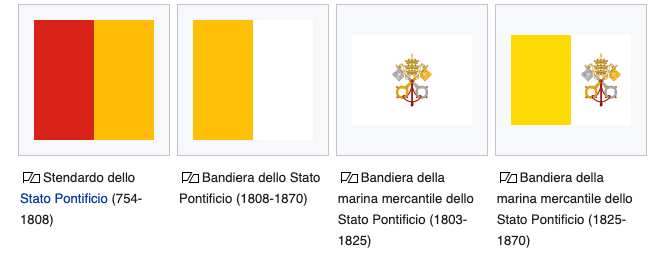The Vatican City State flag is one of only two square-shaped flags (with the Swiss flag).
The Vatican City flag is made up of two vertical bands of the same size, one yellow and the other white. In the center, the crossed keys of San Pietro and the papal tiara. One key symbolizes the opening of the earthly world, the reality of every day, while the other is the opening to the extraordinary, otherworldly world. They are crossed with each other because they both serve to build the link between earth and sky.
In ancient times, the flag of the Papal States was red and yellow (or better to say amaranth and red, colors derived from the colors of the coat of arms of the Holy See), the two traditional colors of the Senate and the Roman people, which were however replaced with white and yellow in 1808, when Pius VII ordered his noble guard and other pontifical armed bodies remained faithful to adopt a new cockade with the aforementioned colors to distinguish them from the remaining troops incorporated into the French army, and to which General Sestio AF Miollis had granted continue to use their old cockade.
Raised for the first time by the merchant navy, the oldest white-yellow pontifical flag dates back to 1824, but with the colors placed diagonally. They were then placed in two vertical bands by Pius IX who, after returning from the exile of Gaeta. Pius IX had the papal coat of arms added, instead of the tricolor ties (white, red and green) inserted in 1848.
It was only after the Lateran Treaty between the Holy See and Italy on 11 February 1929 that the papal flag took its present form, also being considered the flag of a foreign state and therefore protected in the same way as all the others (art. 299 of the Italian Penal Code).
The Vatican City flag was raised for the first time on June 8, 1929.

The pontifical flag should not be confused with the banner of the Holy Roman Church, a symbol of its spiritual sovereignty over the whole world.
